Autochthonous grape varieties, idiosyncratic wine styles and ancient traditions: The Jura has developed into one of the most exciting wine regions in France today. With its complex, partly archaic identity, it cannot be pigeonholed. It is hyped by many wine fans, but also misunderstood by many. What is certain is that Jura wines must be sought after. They refuse the dictates of mainstream taste and challenge discerning palates.
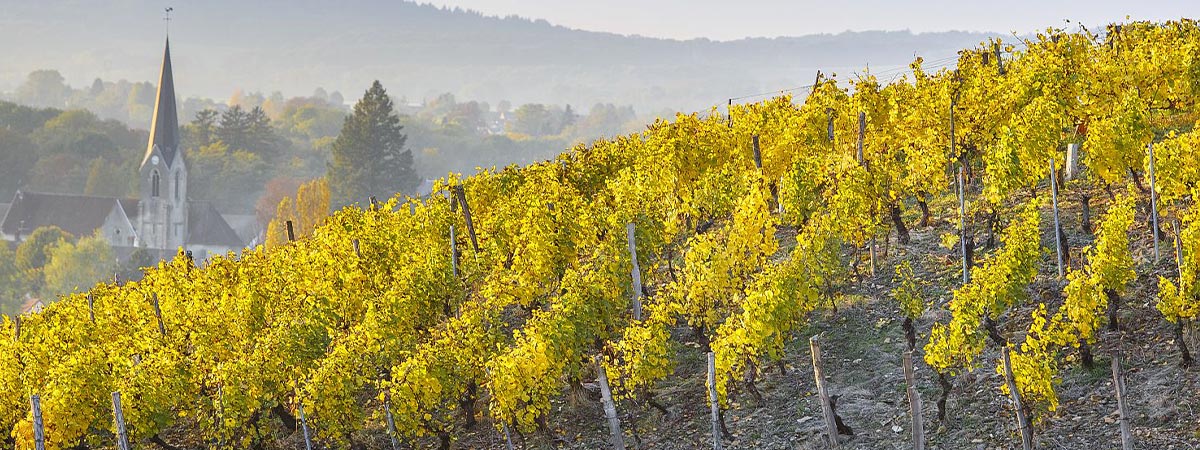 |
In the Jura, the clocks tick differently. While elsewhere more and more winemakers are renouncing modern oenology and producing natural wine, many in the Jura have simply skipped the chapter with modernity. Olivier Badoureaux, director of the Comité Interprofessionnel des Vins du Jura, explains the development as follows: "Natural viticulture has a long tradition here, and some wineries have been certified since 1968. Many have emulated the visions of Pierre Overnoy, the old master of natural wine. Today, about half of all Jura winegrowers work organically or biodynamically. However, the value cannot be transferred to the area cultivated, because many of the 220 vineyards in the Jura are very small. Some cultivate less than one hectare of vineyards."
In fact, there are only a few larger certified organic producers, such as Stéphane Tissot in Arbois and Jean-François Ganevat in Rotalier. Both also belong to the Vin Naturel movement and have made a name for themselves in the natural wine scene internationally. Their commitment has contributed significantly to the growing organic trend in the region over the past 20 years.
"The organic area will continue to increase because organic and natural wines are an important part of our identity," Olivier Badoureaux is convinced. According to the association "Le nez dans le vert", to which most of the organic farms in the Jura belong, about four to five wineries convert to organic production every year.
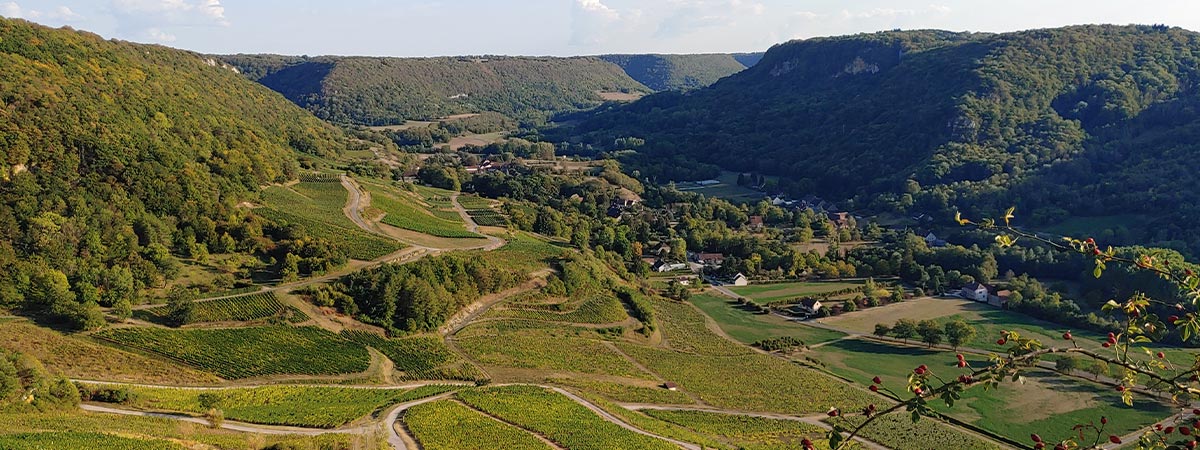 |
Until the phylloxera disaster, around 40 different grape varieties were cultivated in the Jura. Today, the winegrowers mainly limit themselves to the autochthonous white wine variety Savagnin, the red Poulsard (or Ploussard) and Trousseau as well as Chardonnay and Pinot noir.
The vineyards stretch for over 80 kilometres between the towns of Salins-les-Bains in the north and Saint-Amour in the south and comprise seven appellations. They are the four geographically defined growing regions AOC Arbois, AOC Château-Chalon, AOC L'Étoile and AOC Côtes du Jura, as well as three "product" appellations: AOC Macvin du Jura, AOC Crémant du Jura and AOC Marc du Jura.
Vin Jaune is the most famous wine of the Jura. It is known as a cultural treasure of France at home and abroad and is still one of the great wines of the world. At the same time, it has contributed greatly to the bulky image of the Jura. This is because the archaic wine, matured for several years under a layer of flor yeast in barrels that are not full of bung, seems to have fallen out of time. Like other oxidative-style wines, it shares the fate of being unsuitable for the present. Its profound, idiosyncratic aromas are not understood by most wine drinkers. Majority appeal is a different matter.
Instead of focusing on oxidative wines, as in the past, winemakers today are increasingly producing fresh, racy whites and, above all, Crémant du Jura. In doing so, they are trying to walk a tightrope: to break away from the former flagship without denying tradition. But even though vin jaune only accounts for five percent of total production, the region is still mainly associated with it. Association director Olivier Badoureaux is also aware of this problem: "Many people assume that all wines here taste like Vin Jaune. That puts them off. We have to communicate that there are many different wines that are by no means all so difficult to access. The share of reductive white wines made from Savagnin and Chardonnay, the so-called vins ouillé, is steadily increasing."
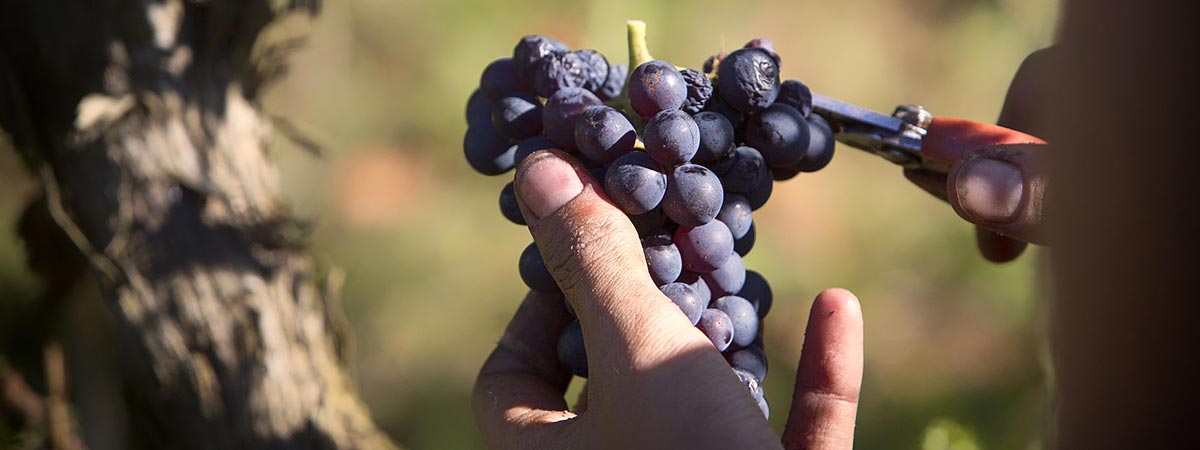 |
Due to the manageable production volumes, Jura wines are mainly drunk in the region. Exports, however, are on the rise. At the moment, the quota is twelve per cent; 15 years ago, only two per cent went abroad. Wines from the Jura are mainly found in restaurants with courageous sommeliers. So it is not surprising that Savagnin, Poulsard or Trousseau are on the menu in hip wine bars in Paris, Copenhagen or New York.
The region's best-selling product, however, is Crémant du Jura - the area under cultivation for the bottle-fermented sparkling wine has been growing for years. Olivier Badoureaux: "Crémant du Jura accounts for 40 percent of our sales, but like all sparkling wines, it suffers greatly from the Corona crisis. Nevertheless, it remains the draught horse and I am confident that sales will increase again after the pandemic."
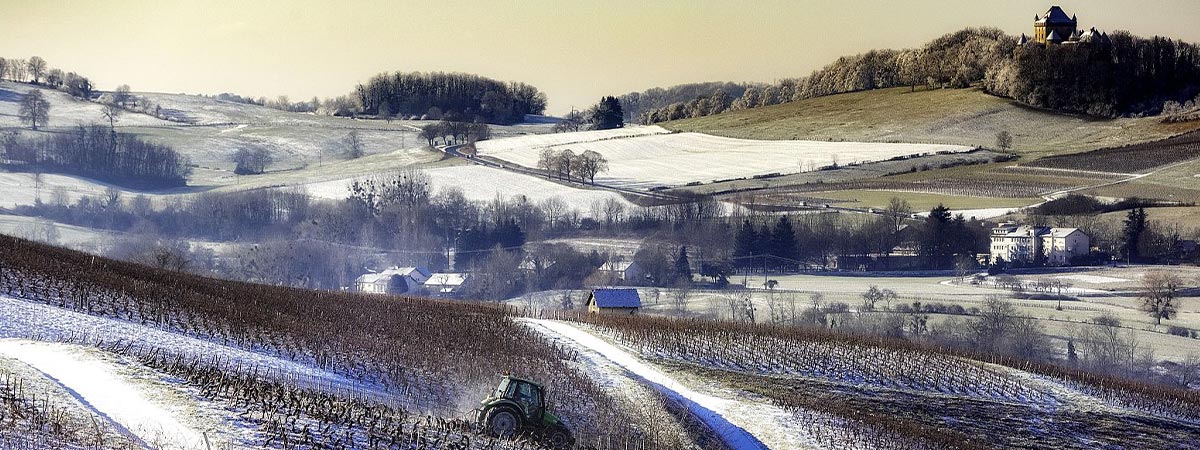 |
Like everywhere else in the world, success in the Jura attracts foreign investors. Above all, winegrowers from Burgundy are attracted by the unusual wines. Despite the resulting extreme rise in land prices, the demand for vineyards is unbroken. Many young winegrowers from the Jura would like to buy additional land, but do not have the necessary money.
And another circumstance makes things difficult: not infrequently, winegrowers have to fight with cattle breeders and dairy farmers over land. It is not only wine that is popular in the Jura, but also the world-famous Comté cheese that is produced here. This also explains why the area under vine has increased by just 100 hectares in the past 20 years.
But what brings in more: cheese or wine? Director Olivier Badoureaux differentiates: "Some winegrowers are hyped, others have difficulties selling their wines. Those who succeed in attracting attention can make a good living. For many who haven't made it to fame yet, it's more profitable to produce milk for Comté production."
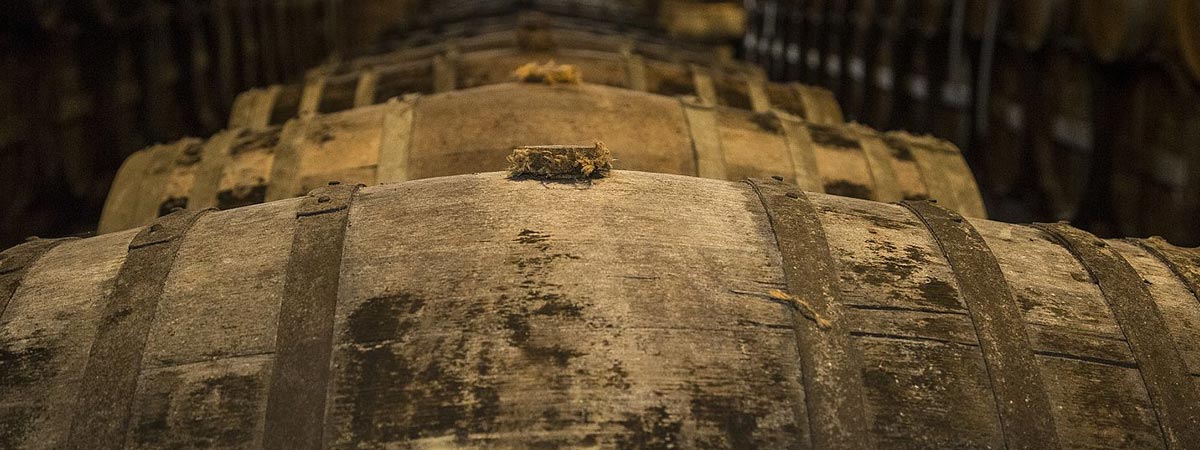 |
The Jura, like its wines, is a multifaceted universe, far from any commercial uniformity. If you want to get to know the wines, it is best to do as the winegrowers do during the tastings on site. Never start with Vin Jaune, but first with a light wine, for example a red Poulsard - or with a Crémant du Jura.